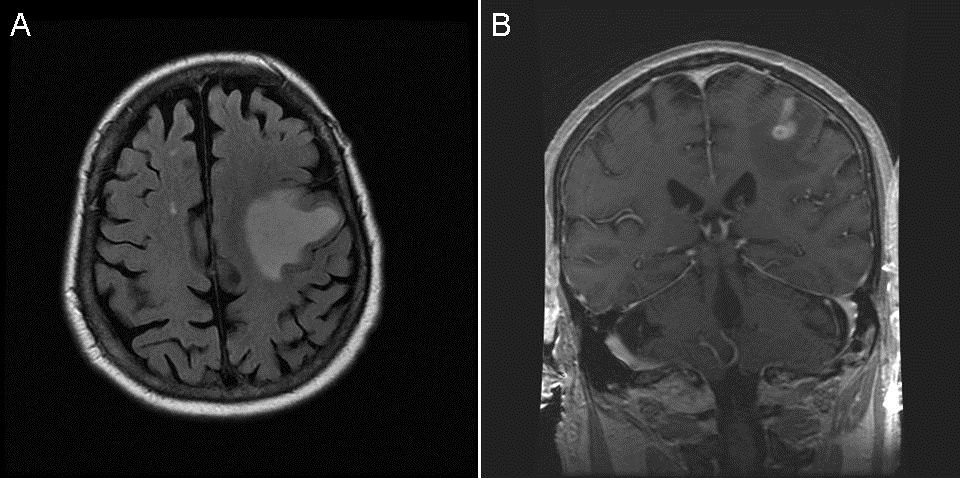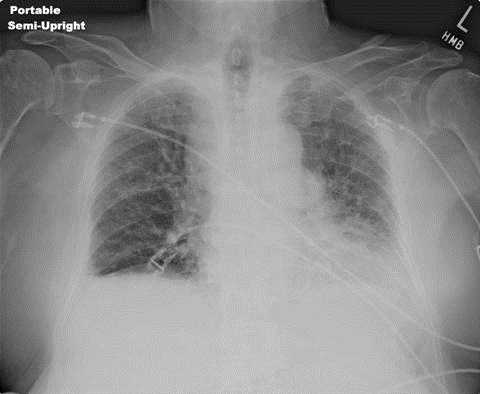

Correct!
1. A CT scan of the brain
The most emergent consideration is a stroke or cerebrovascular accident since urgent and early treatment of acute ischemic stroke holds a better promise of better neurological outcomes (1). The goal is to complete an evaluation and to begin fibrinolytic treatment within 60 minutes of the patient’s arrival in an emergency department. . Emergency imaging of the brain is recommended before initiating any specific therapy to treat acute ischemic stroke. In most instances, non–contrast-enhanced CT or MRI will provide the necessary information to make decisions about emergency management. These imaging studies should take precedent over laboratory and chest radiography evaluation.
The CT of the brain showed a small posterior frontal mass with surrounding vasogenic edema. This was followed by a MRI (Figure 1).

Figure 1. Panel A: Representative axial view of the MRI of the head. Panel B: Representative coronal view.
A chest x-ray was also obtained (Figure 2).

Figure 2. Admission portable chest x-ray.
Which of the following should be done next? (Click on the correct answer to proceed to the third of five panels)